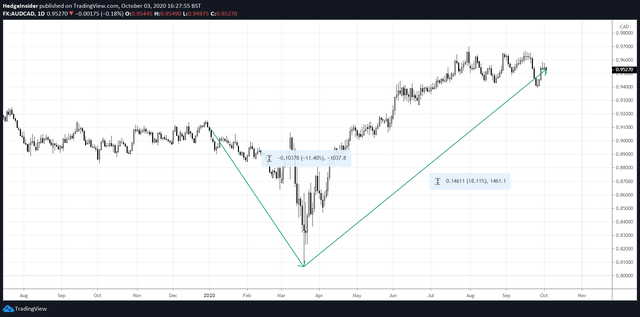The AUD/CAD currency pair, which expresses the value of the Australian dollar in terms of the Canadian dollar, sets two commodity currencies against each other. This year, one of the most monitored commodities has been crude oil, which is a key export of Canada. Australia is in fact a net-importer of the same crude oil products that Canada is a net-exporter of, and as such the collapse in oil prices has largely improved the case for AUD/CAD upside.
Therefore, in spite of the decline in the first quarter of the year, AUD/CAD has ended the year significantly higher. The more recent rally has also been boosted by significant monetary interventions, particularly in the United States in which the short-term interest rate (as set by the Federal Reserve) was cut from a range of 1.50-1.75% to just 0.00-0.25%. As a result, discount rates on investments collapsed, and newly-introduced QE measures further compressed risk premia, enabling risk assets (most notably equities) to find all-time highs, in spite of technical recessions registering across all major economies.
The effect on AUD/CAD has been like that of the roller coaster. As the daily candlestick chart below illustrates, after falling by more than 11% in the first quarter, AUD/CAD has rallied by over 18% (to the most recent closing price at the time of writing on October 2, 2020).
 (Source: TradingView)
(Source: TradingView)
During global risk-off events, while CAD can be expected to concede strength to safe havens such as USD and CHF (just as AUD and NZD also fall; these are also considered commodity currencies like CAD), AUD generally weakens more than CAD. This is because Australia is a smaller and less sophisticated economy.
Smaller economies do not necessarily find that their currencies weaken as a result of risk-off events; Switzerland is tiny as compared to the euro